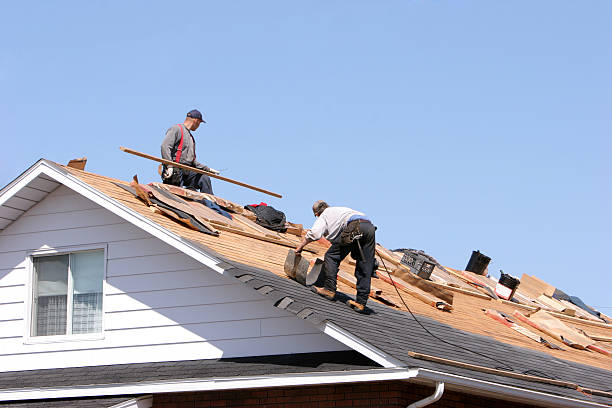Roof flashing is one of the most important aspects of a roofing system, yet it is often one of the most overlooked. Roof flashing is used to seal and protect areas where the roofing material meets vertical surfaces, such as chimneys, skylights, vent pipes, and dormers. Without proper roof flashing, these vulnerable areas can develop leaks, which can lead to significant damage to the roof and the interior of the home.
How Long Does Roof Flashing Last?
Generally speaking, roof flashing should be replaced every 20-30 years, depending on the type of material used and the exposure to the elements. Of course, there are a number of factors that can affect the lifespan of roof flashings, such as the quality of the materials used, the installation, and the environment.
For example, galvanized steel flashing will last longer in a dry climate than in a humid climate. Similarly, lead-coated copper flashing will last longer than uncoated copper flashing. And properly installed roof flashing will last longer than roof flashing that was not installed correctly.
Shapes, Sizes, and Types of Roof Flashing That Are Available
One thing that you should know about roof flashing is that it prevents leaks by diverting water away from vulnerable areas. Roof flashing is typically made of metal, such as galvanized steel, lead-coated copper, or aluminum. It is also sometimes made of plastic or rubber.
Roof flashing is available in a variety of shapes and sizes to fit the specific needs of your roof. The most common type of roof flashing is step flashing, which is used where the roof meets a vertical surface, such as a chimney.
Another common type of roof flashing is valley flashing, which is used in the valleys formed where two slopes of the roof come together. Valley flashing diverts water away from these vulnerable areas to prevent leaks. Roof flashing is also used around skylights, vent pipes, and other protrusions. The type of roof flashing used will depend on the specific needs of the roof.
Installing Roof Flashing
Installing roof flashing is not a do-it-yourself project. It should be installed by a roof flashing professionally to ensure that it is installed correctly. Roof flashing is available in a variety of sizes and shapes to fit the specific needs of your roof, so it is important to choose the right type of flashing for your particular roof.
Once you have chosen the right type of flashing, the next step is to install it. Roof flashing should be installed over the roofing felt and under the shingles. The flashing should be installed so that it extends up the vertical surface and over the top of the shingles.
It is important to seal the edges of the roof flashing to prevent water from leaking through. Roof cement or tar should be used to seal the edges of the roof flashing. Once the roof flashing has been installed, the shingles should be installed over it.
When to Replace Roof Flashing
As mentioned above, roof flashing should be replaced every 20-30 years, depending on the type of material used and the exposure to the elements. However, there are a number of factors that can affect the lifespan of roof flashings, so it is important to inspect them regularly and replace them when necessary.
If you notice any cracks, leaks, or other damage to your roof flashings, they should be replaced as soon as possible. Ignoring these problems can lead to more serious damage to your roof and your home.
Types of Roof Flashing Products That Are Available
1. Roll Roofing Flashing:
Roll roofing flashing is a type of Roof flashing that is available in rolls. It is made of galvanized steel, lead-coated copper, or aluminum. Roll roofing flashing is used around skylights, vent pipes, and other protrusions.
2. Step Flashing:
Step flashing is a type of Roof flashing that is used where the roof meets a vertical surface, such as a chimney. It is made of galvanized steel, lead-coated copper, or aluminum. Step flashing is available in a variety of sizes and shapes to fit the specific needs of your roof.
3. Valley Flashing:
Valley flashing is a type of Roof flashing that is used in the valleys formed where two slopes of the roof come together. Valley flashing diverts water away from these vulnerable areas to prevent leaks. Valley flashing is made of galvanized steel, lead-coated copper, or aluminum.
4. Skylight Flashing:
Skylight flashing is a type of Roof flashing that is used around skylights. It is made of galvanized steel, lead-coated copper, or aluminum. Skylight flashing is available in a variety of sizes and shapes to fit the specific needs of your roof.
5. Vent Pipe Flashing:
Vent pipe flashing is a type of Roof flashing that is used around vent pipes. It is made of galvanized steel, lead-coated copper, or aluminum. Vent pipe flashing is available in a variety of sizes and shapes to fit the specific needs of your roof.
Roof Flashing Materials
1. Galvanized Steel:
Galvanized steel is a type of steel that has been coated with a layer of zinc. This protects the steel from corrosion and rust. Galvanized steel is commonly used for Roof flashing, gutters, and downspouts.
2. Lead-Coated Copper:
Lead-coated copper is a type of Roof flashing that has a layer of lead on the surface. This protects the copper from corrosion and rust. Lead-coated copper is commonly used for Roof flashing, gutters, and downspouts.
3. Aluminum:
Aluminum is a type of metal that is lightweight and resistant to corrosion. Aluminum is commonly used for Roof flashing, gutters, and downspouts.
Conclusion
Roof flashing is a vital part of your roofing system. It is important to choose the right type of roof flashing for your home and install it properly. Roof flashing should be inspected regularly and replaced when necessary. Ignoring problems with roof flashings can lead to more serious damage to your roof and your home. With the many types and designs of roof flashing that are available, you can find the perfect solution for your home.










